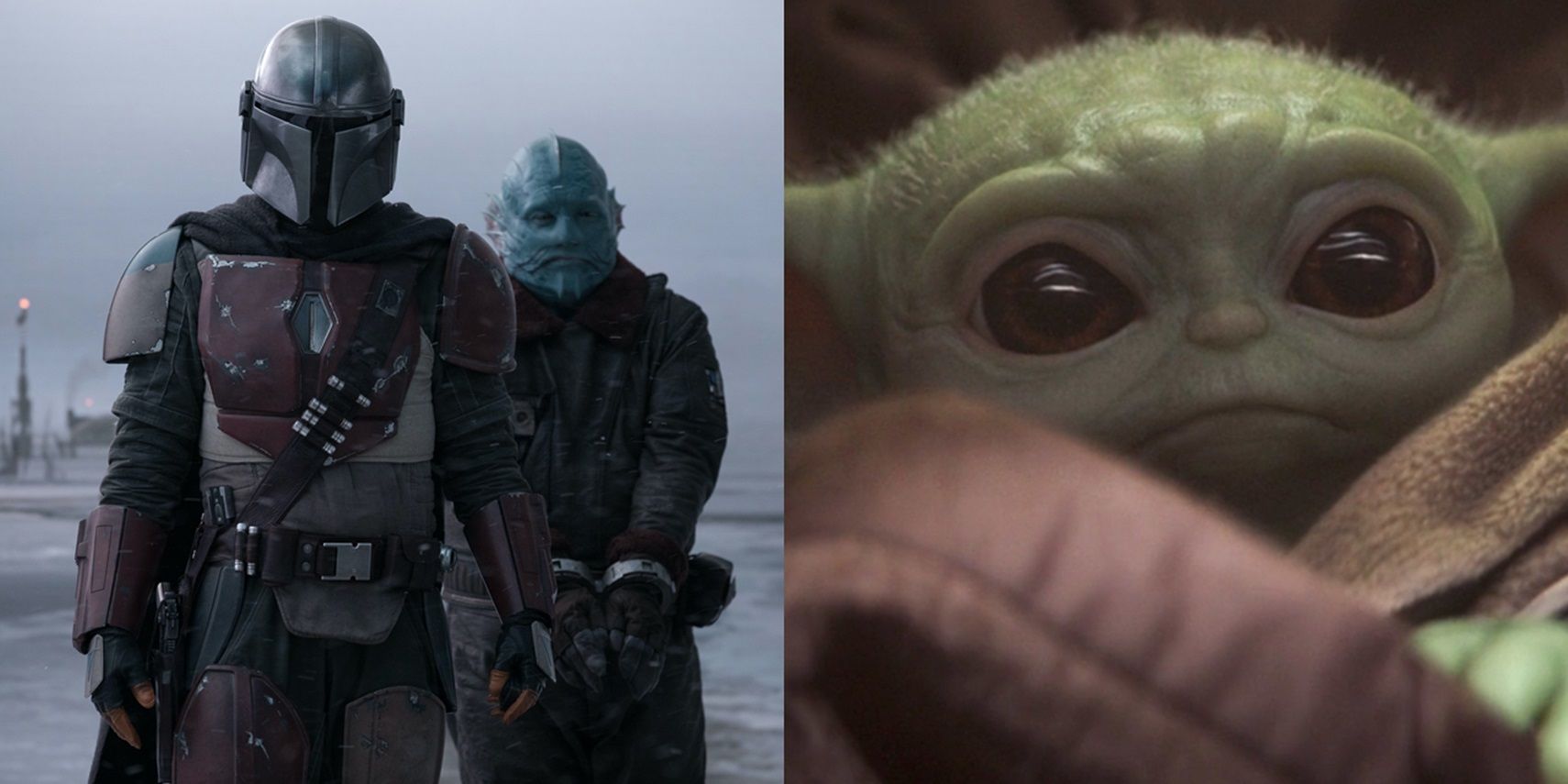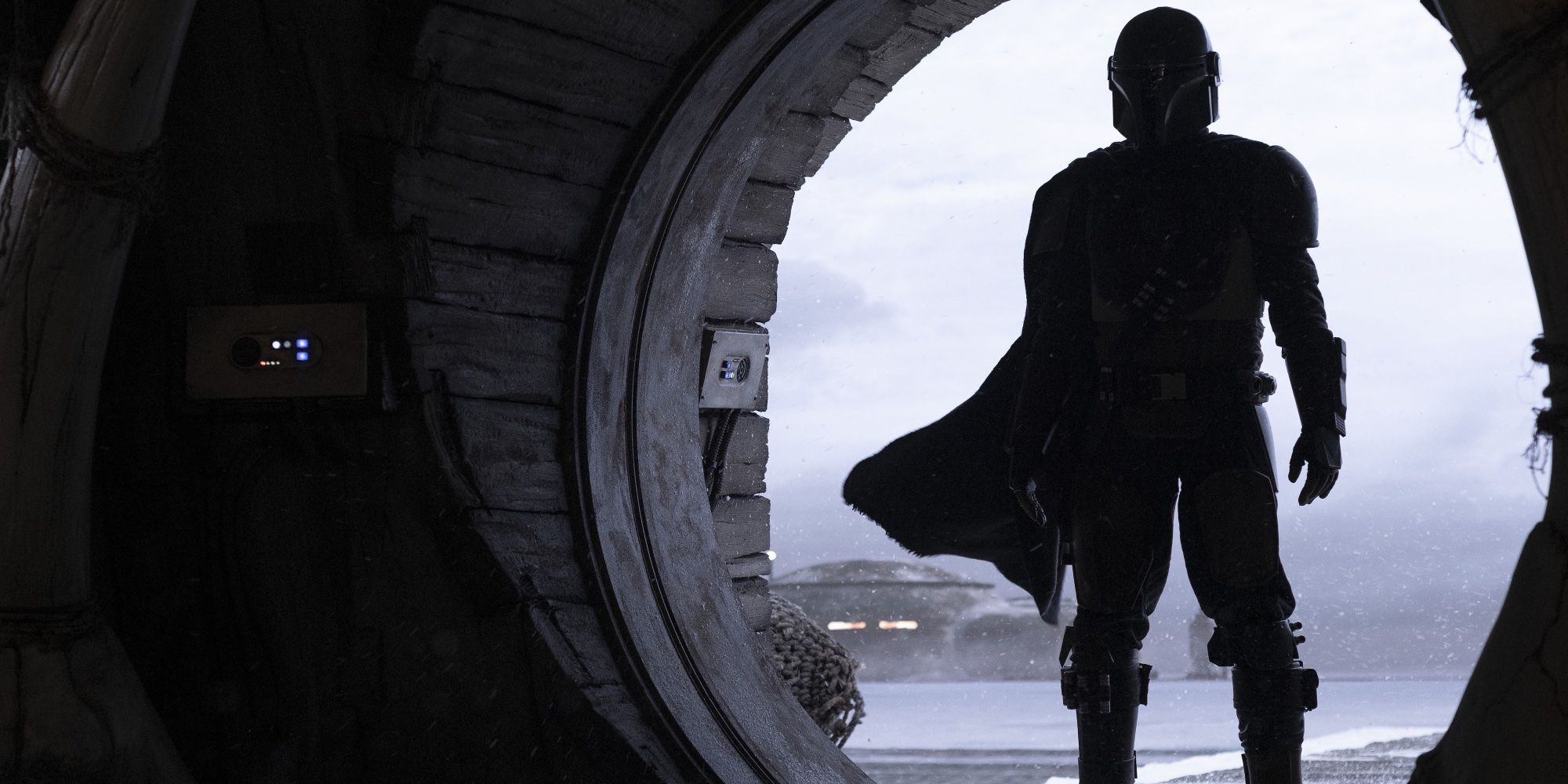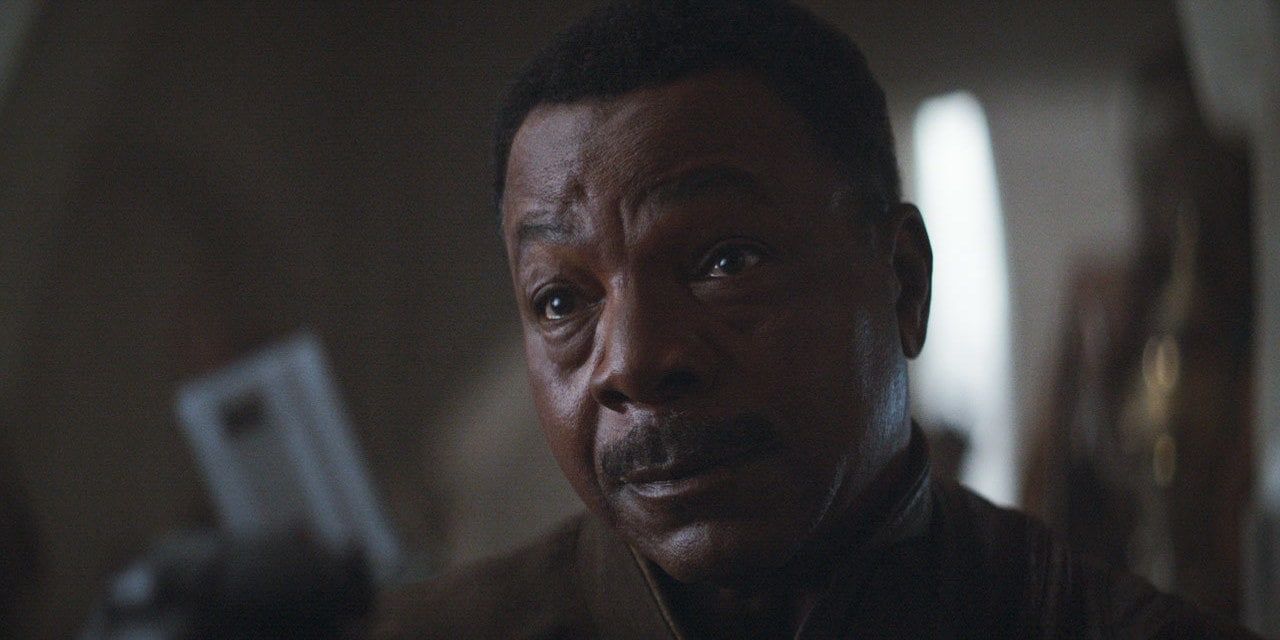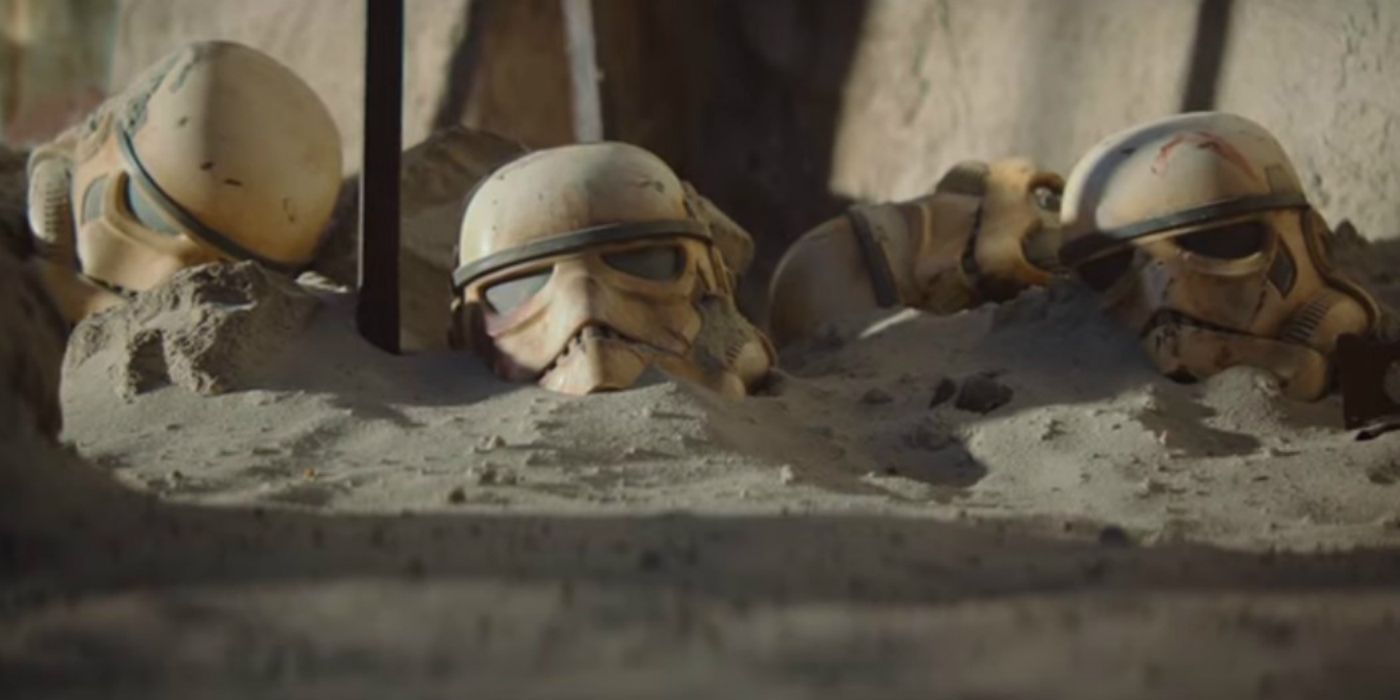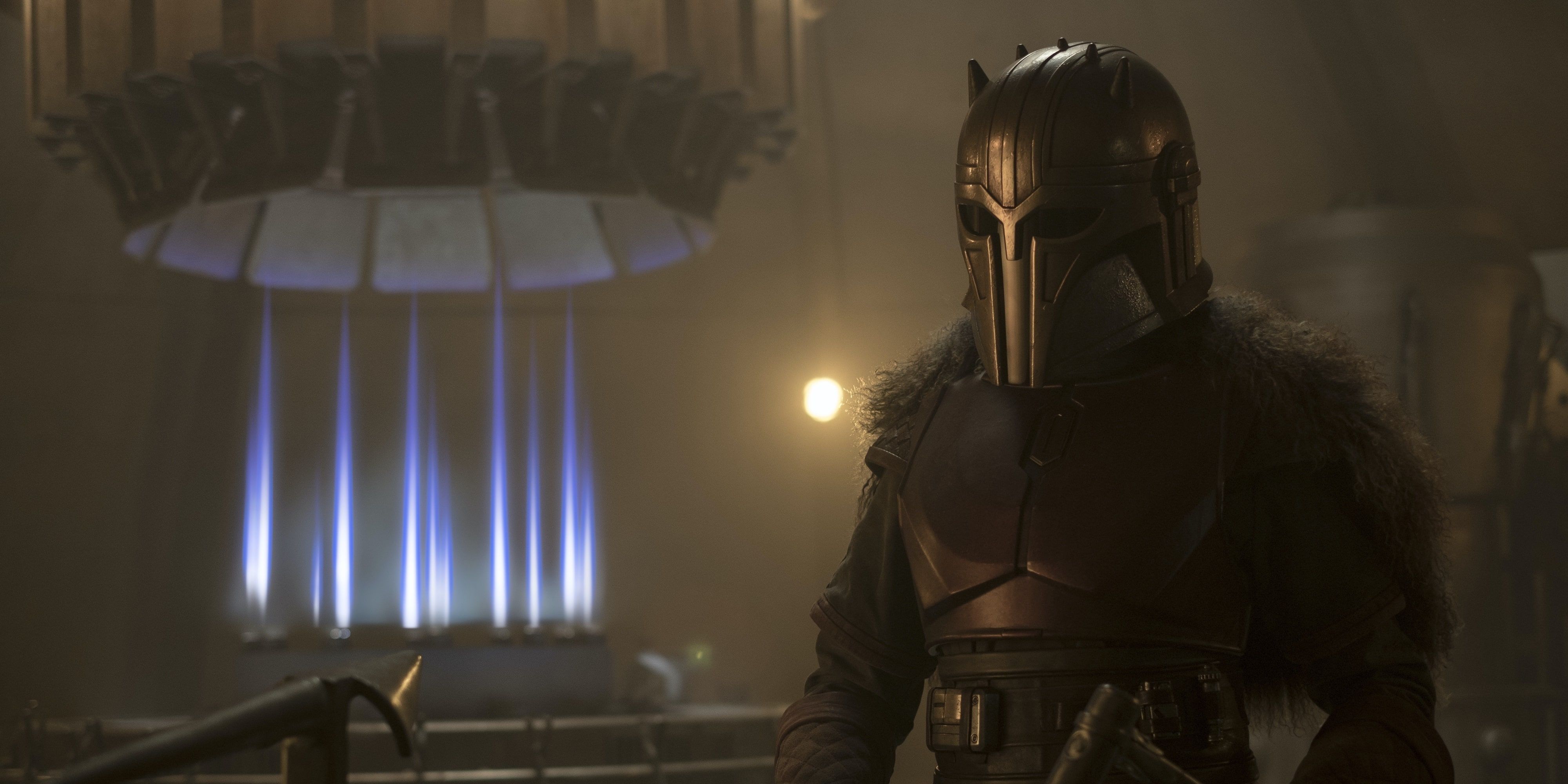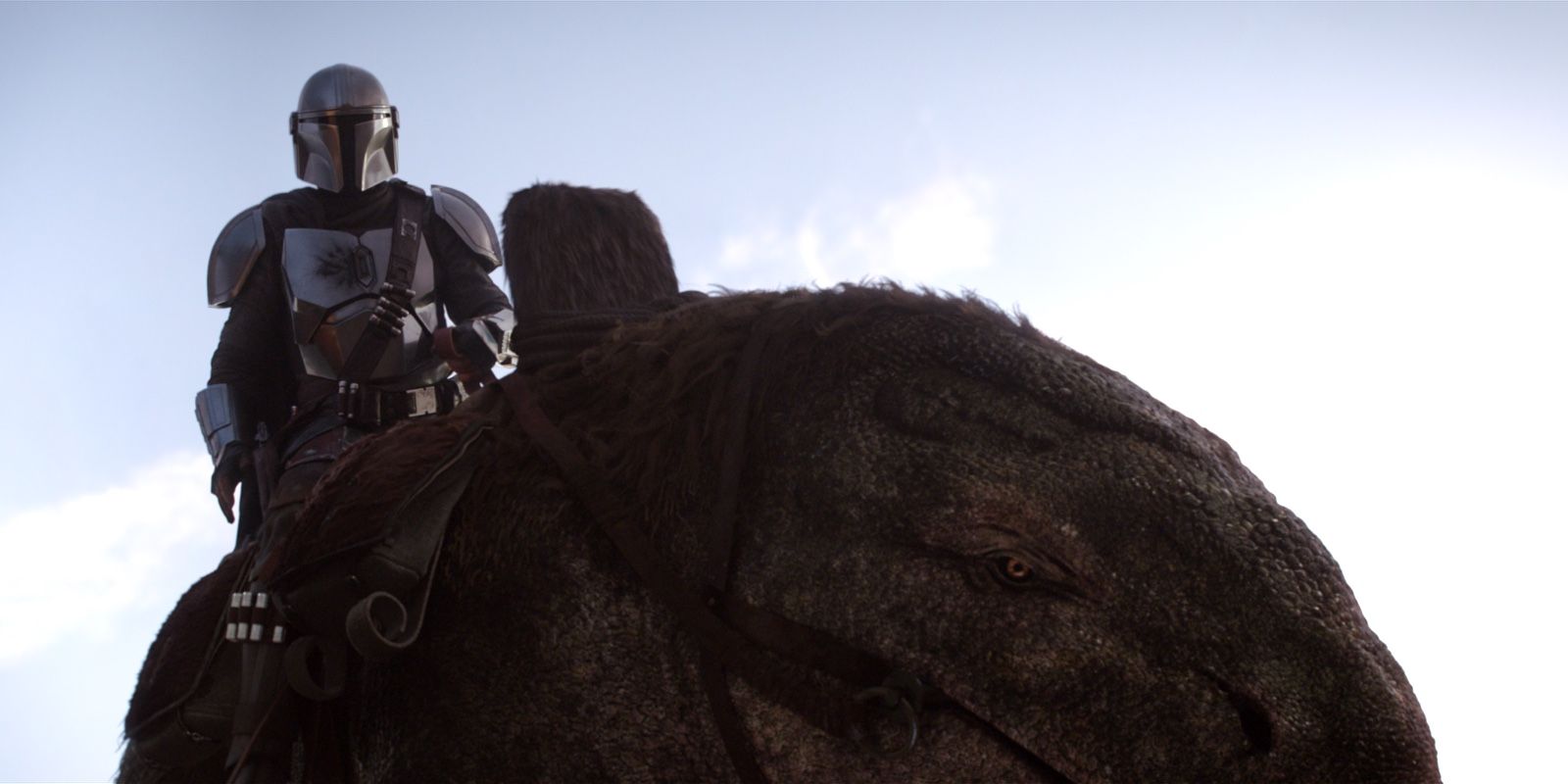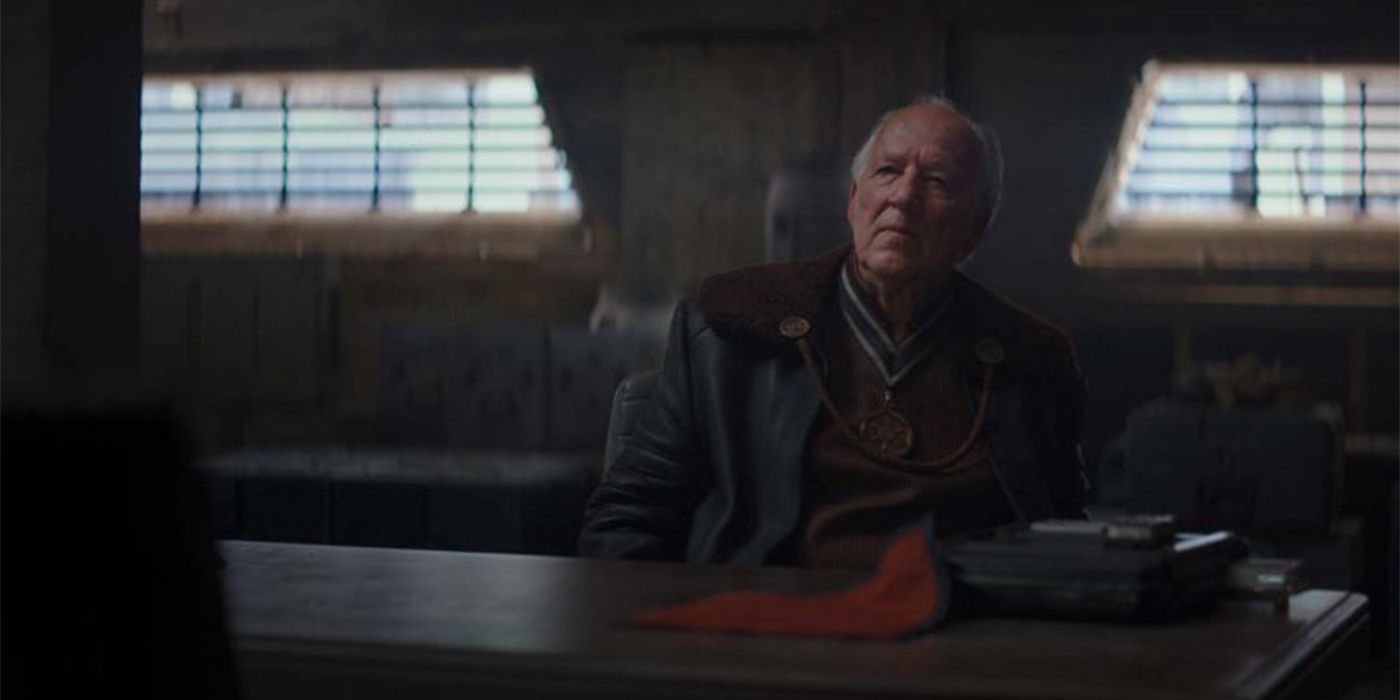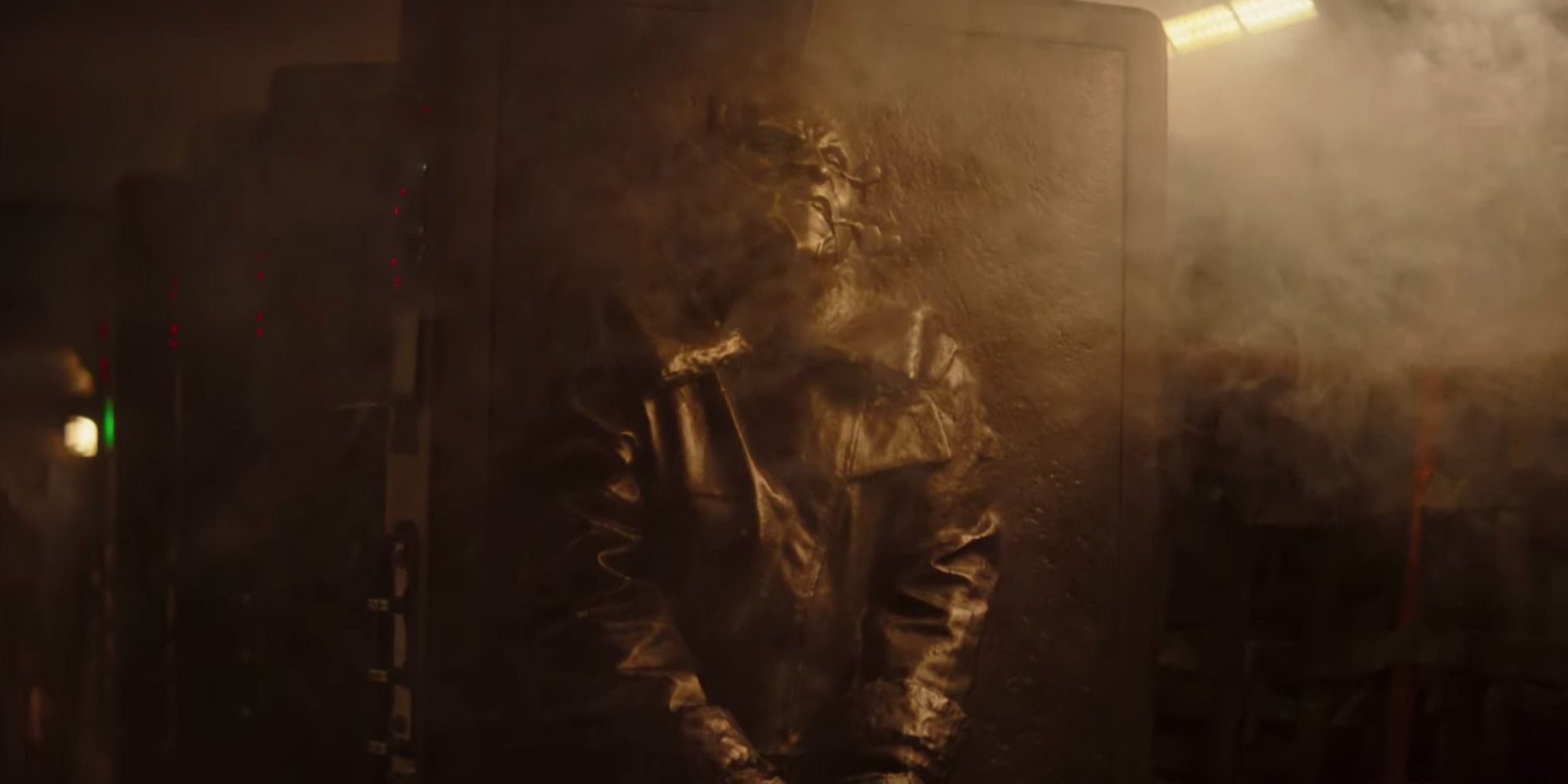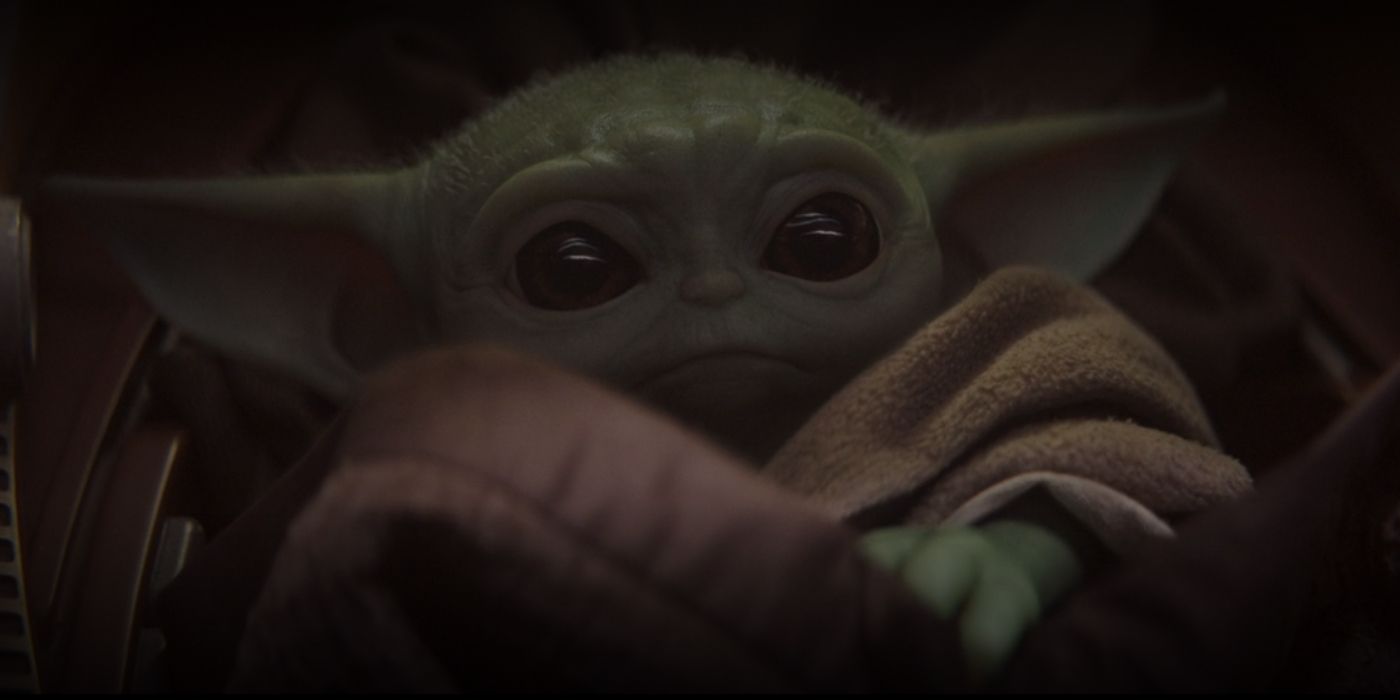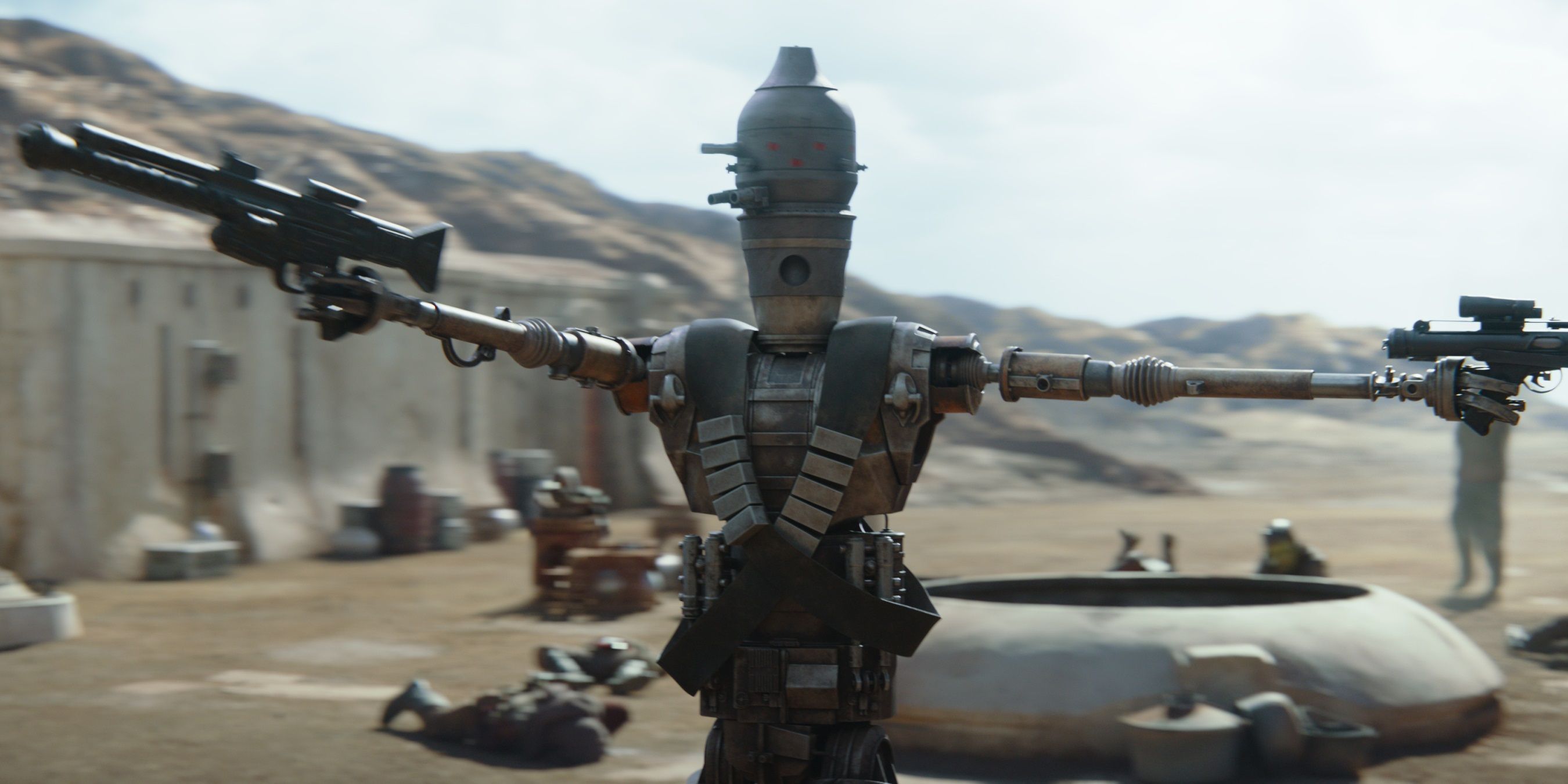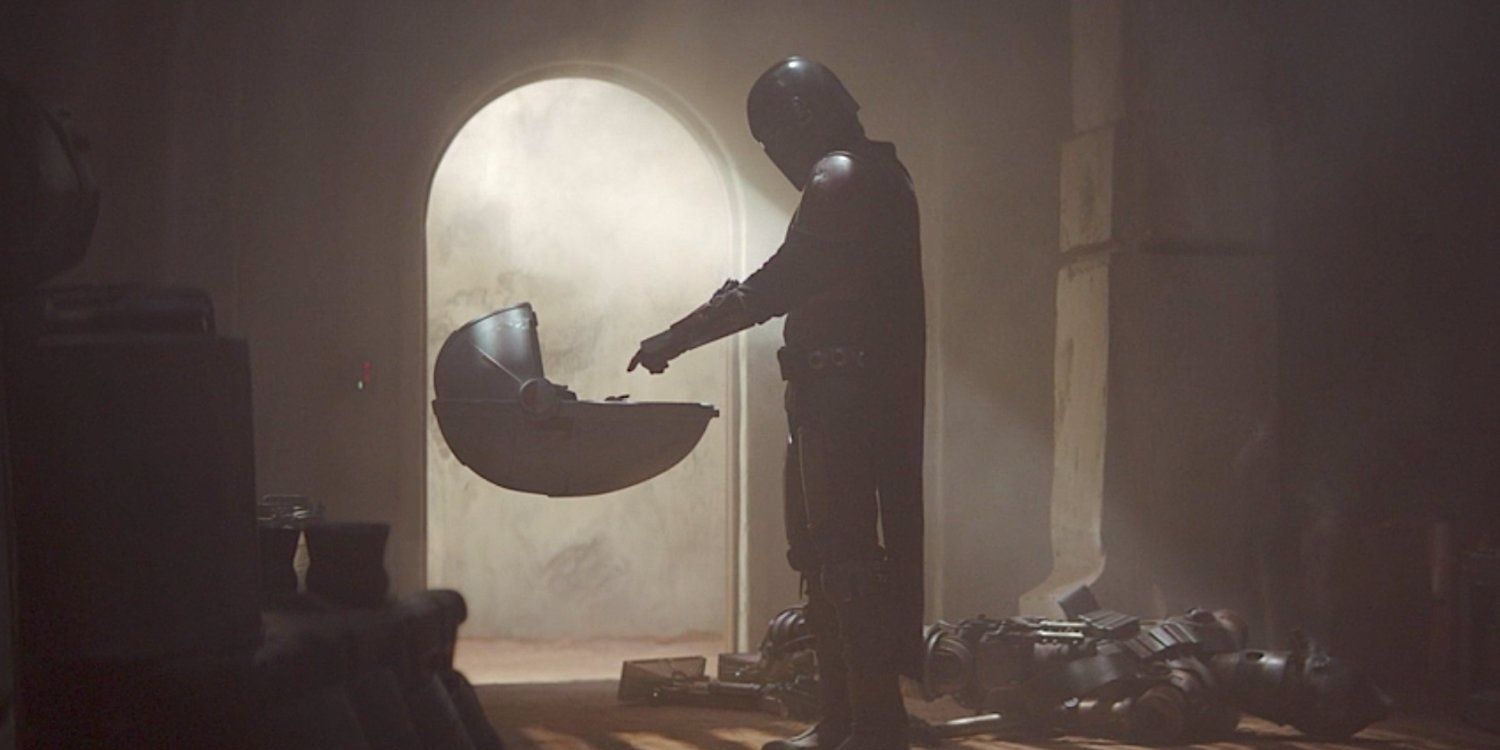There was a lot riding on The Mandalorian’s first episode. Star Wars fans’ relationship with the franchise was on the rocks in the midst of the polarizing sequel trilogy, and The Mandalorian was crucial to Disney’s launch strategy for its streaming service. Thankfully, “Chapter 1: The Mandalorian” didn’t disappoint and the show instantly became a global phenomenon.
Written by series creator Jon Favreau and directed by George Lucas’ personal protégé Dave Filoni, the episode masterfully laid the groundwork for the rest of the series with brisk storytelling, sharp characterization, and intriguing worldbuilding.
Mando Is Framed As An Antihero
While Luke Skywalker is a clear-cut bright-eyed hero who dreams of doing noble things to save the galaxy, the Mandalorian is framed as more of an antihero who earns his living by ruthlessly bringing bad guys to justice.
Din Djarin’s character arc has been defined by gradually softening his edges and becoming a more heroic figure. The pilot set the stage for this transformation by initially characterizing Mando as an antihero.
Greef Karga Sets Up The Bounty Hunter Code So Mando Could Break It In A Later Episode
When Mando visits Greef Karga on Nevarro, not only does the scene set up Carl Weathers’ guild boss as a fascinating supporting character; it also establishes the bounty hunter code.
The bounty hunter code is essentially set up as “Chekhov’s creed.” Karga establishes all the rules that Mando has to follow to set up a later episode – which turned out to be “Chapter 3: The Sin” – in which he would break one of those rules and turn the whole guild against him.
It Subtly Established A Post-Empire World
The Mandalorian takes place five years after Return of the Jedi, and while its main focus is the story of Din Djarin, the pilot episode did subtly establish the series’ post-Empire setting with a few key details.
The war-ravaged streets are paved with Stormtrooper armor, Mando struggles to evade ever-expanding New Republic jurisdiction, and the Client uses former Stormtroopers as bodyguards.
The Armorer Introduced Newcomers To Mandalorian Culture
Diehard Star Wars fans were already familiar with the tenets of the Way of the Mandalore before this series put one of the religion’s followers in the spotlight, but more casual viewers were unaware of the creeds and beliefs of Mandalorians.
When Mando pays a visit to the Armorer in “Chapter 1: The Mandalorian,” she provides a bunch of exposition to introduce newcomers to Mandalorian culture and beliefs.
The Revisionist Western Tone
Star Wars has always taken influence from the western genre, but The Mandalorian in particular has positioned itself as a revisionist western. In the pilot episode, Mando is instantly established as the kind of lone antihero seen in bleak, ultraviolent westerns. He even cuts a guy in half with a door in the opening saloon brawl.
The rest of the episode maintains the western influences. There’s a montage of Mando learning how to tame a Blurrg like taming a horse, and a climactic shootout paying homage to The Wild Bunch.
The Client Built An Intriguing Mystique Around The Child
Werner Herzog was perfect casting for the Client. The character’s role in the series is to build up an intriguing mystique around Grogu, and Herzog’s intense line deliveries more than manage it.
Two seasons in, there are still plenty of questions about Grogu’s identity. But viewers know a lot more about his history now than when the mysterious “Baby Yoda” first became a worldwide sensation.
An Abundance Of Star Wars Easter Eggs
While The Mandalorian set out to focus on new characters exploring new worlds, it’s filled with Easter eggs and references to previous Star Wars media for eagle-eyed viewers to catch.
This was established in the very first episode, which shows a bunch of Mando’s bounties frozen in carbonite and even contains a reference to Life Day, a rare canonical acknowledgment of the infamous Holiday Special.
Finding Grogu Taught Mando How To Care
Although Mando is introduced as a cold spaghetti western antihero, he shoots IG-11 to save Grogu, proving that he has a heart. Finding a vulnerable little kid finally teaches the Mandalorian to care for somebody other than himself.
This scene offered strong character development within the pilot episode alone. Din Djarin would continue to warm to The Child and soften his edges throughout the rest of the series.
It Recaptured The Pulpy Fun Of Star Wars
After the saga suffered its first box office bomb and franchise fatigue seemed to be setting in, The Mandalorian effectively saved Star Wars from potential doom. The series perfectly recaptures the pulpy fun of Star Wars in a way that the sequel trilogy never managed.
The show’s serialized format calls back to George Lucas’ earliest influences: multi-part pulp serials that kept audiences coming back with cliffhangers.
The Iconic Final Shot Sets Up The Lone Wolf & Cub Dynamic
Since Grogu was kept out of The Mandalorian’s marketing, the show was set up to focus entirely on Din Djarin’s career as a bounty hunter. However, the final shot of the pilot episode – Mando and Grogu reaching out to each other – established the show’s real premise.
As the story of a disciplined warrior taking a baby on all his adventures, The Mandalorian is essentially an intergalactic riff on the Lone Wolf and Cub series.

